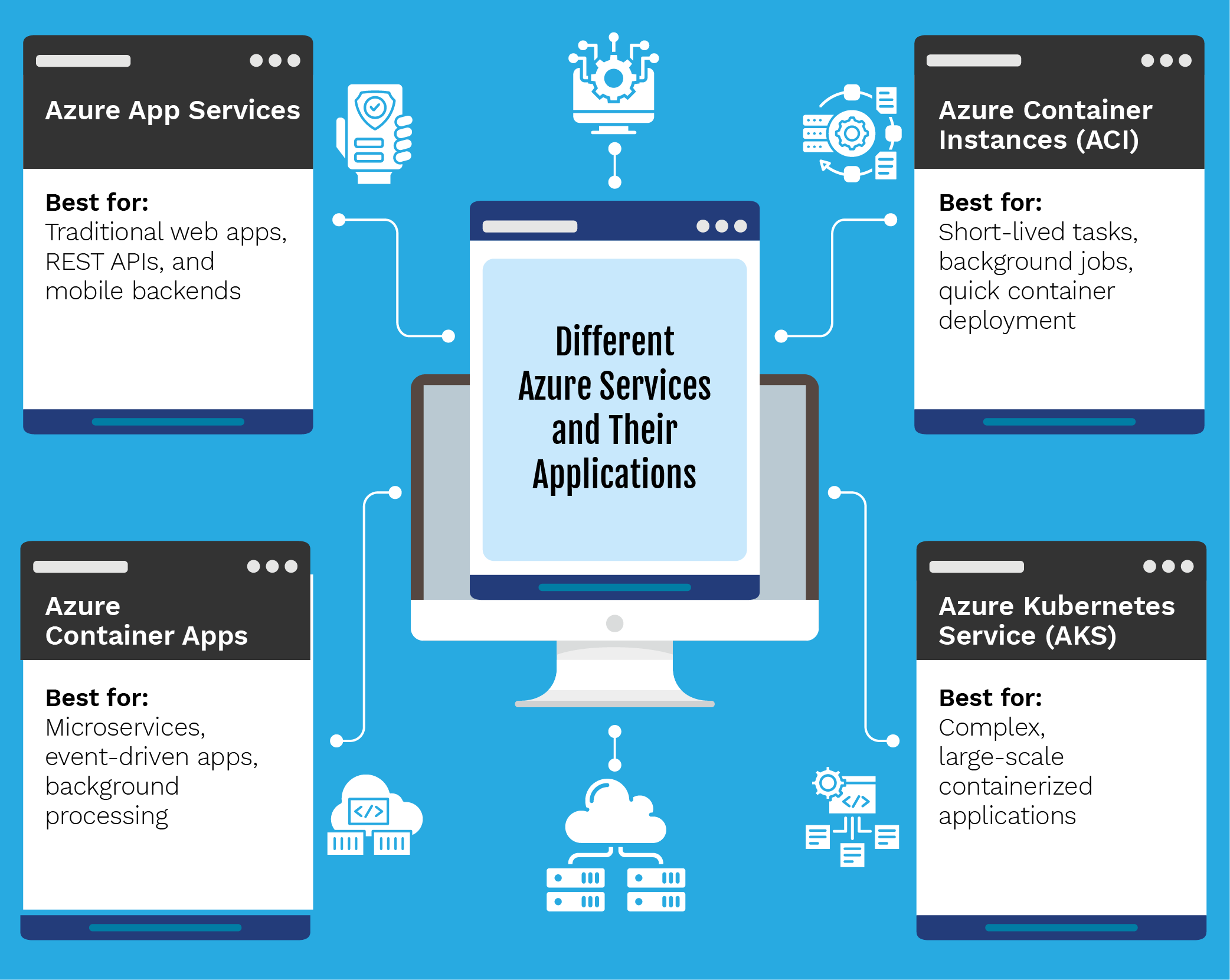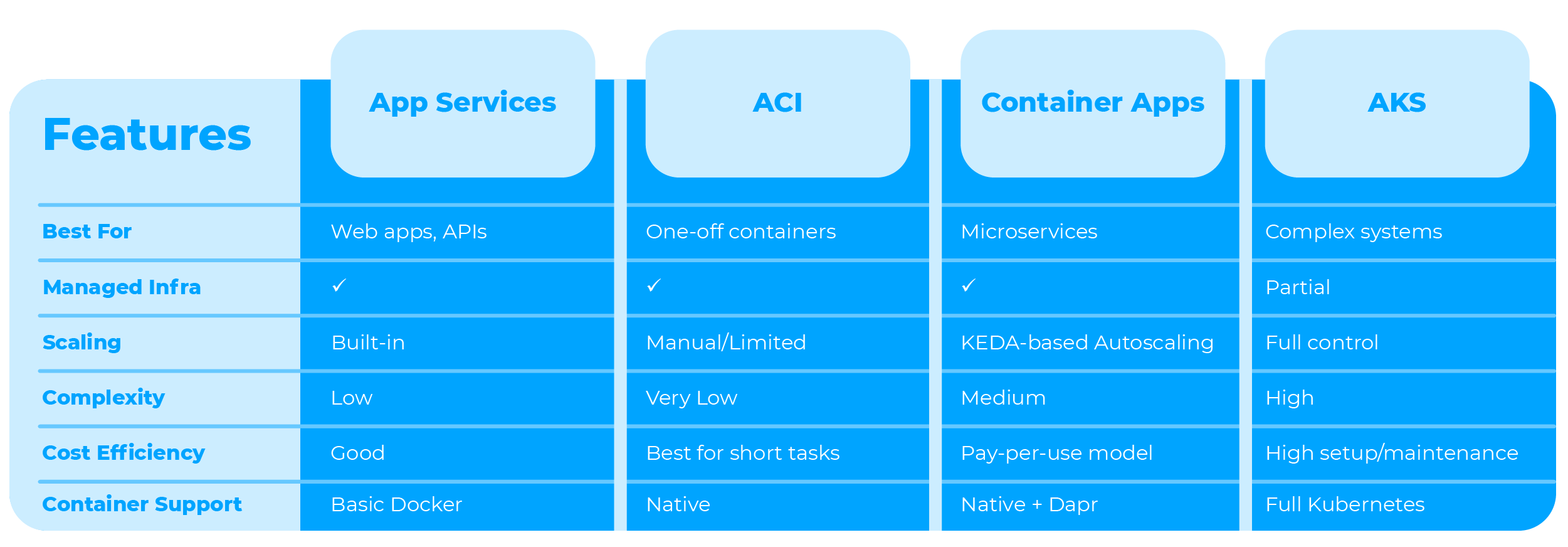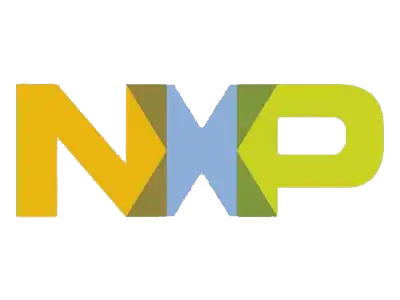One of the first things to consider when developing a cloud-based application is where it should be stored. Consider it similar to selecting the appropriate type of home for your requirements; you wouldn’t rent a studio apartment if you were managing a large family company, would you?
Depending on the functions and design of your application, Microsoft Azure offers you a variety of “homes” to select from. Some provide you with greater control and flexibility, while others are straightforward and ready to use.
A primary consideration for developers is where to run the software when developing or upgrading cloud-based apps. For expert guidance on choosing the right Azure service for your application architecture, explore eInfochips’ Cloud Engineering Services. A range of computing services, each tailored to a certain job, are offered by Microsoft Azure. In this post, we will look at four popular solutions: App Services, Azure Container Instances (ACI), Azure Container Apps, and Azure Kubernetes Service (AKS), and offer advice on how to choose the best one for your use case.
Different Azure Services and Their Applications:

1. Azure App Services
With Azure App Services, you can host websites and web apps with ease and without having to worry about server management. Simply deploy your code, and Azure takes care of scaling, operations, and security.
Best for: Traditional web apps, REST APIs, and mobile backends
Azure App Services is a fully managed platform ideal for hosting .NET, Java, Python, Node.js, and PHP web apps. It supports:
- CI/CD integration
- Custom domains
- SSL
- Autoscaling
- Staging environments
Example:
The efficiency of current progress is astounding. Teams can quickly launch a client portal using ASP.NET Core and Azure SQL Database; all it takes is a few clicks to get the application up and running. Easy CI/CD automation is made possible by integrating GitHub Actions, guaranteeing dependable and seamless deployments. Applications may easily manage unforeseen traffic surges thanks to easily adjustable features like auto-scaling. This accurately captures the essence of effective, cloud-native development in the future.
2. Azure Container Instances (ACI)
You can easily execute programs in containers using Azure Container Instances without having to build servers or other infrastructure. Paying only while your app is operating makes it ideal for quick jobs.
Best for: Short-lived tasks, background jobs, quick container deployment
If you want to run isolated containers without the overhead of a complete orchestration platform, ACI is a wonderful option. You are only charged while the container is operating, and you benefit from quick starting times.
Example:
You must use a containerized Python application to handle PDFs uploaded by users. On-demand container spinning, file processing, and automated shutdown are all possible with ACI.
3. Azure Container Apps
With Azure Container Apps, you can operate several microservices, or tiny apps, that scale on their own according to demand. It’s excellent for creating adaptable, event-driven systems without having to handle intricate infrastructure.
Best for: Microservices, event-driven apps, background processing
Azure Container Apps support microservice development with:
- Built-in autoscaling via KEDA
- Dapr support for communication and state
- Simple deployment with full container portability
Example:
A microservices design, in which each service manages a distinct task—like inventory control, payment processing, or shipping updates—is frequently used in modern systems. Each microservice may be set up in its own container using Azure Container Apps, allowing for autonomous lifecycle management and scaling.
The integrated support for KEDA (Kubernetes-based Event-Driven Autoscaling), which dynamically scales services in response to real-time demand, is a significant benefit of this strategy. This guarantees the best possible use of available resources and helps prevent needless expenses related to idle infrastructure.
Furthermore, by offering state management and safe, dependable, and consistent service-to-service communications, Dapr (Distributed Application Runtime) improves communication between services. It allows developers to concentrate on business logic by abstracting away a large portion of the complexity of distributed systems.
A robust and economical system that adapts automatically to changing workloads is the end result, guaranteeing performance and scalability without over-provisioning resources.
4. Azure Kubernetes Service (AKS)
Azure Kubernetes Service (AKS) gives you complete control over the operation and management of several containers across numerous computers. Large, intricate programs that require great speed, scalability, and customization are best suited for the program.
Best for: Complex, large-scale containerized applications
AKS provides enterprise-grade orchestration for containers with complete control over configuration and scaling. Features include:
- Ingress controllers
- Helm charts
- Azure DevOps pipelines
- Full Kubernetes API access
Example:
A fintech startup using Prometheus/Grafana to manage traffic routing, security, and custom monitoring uses AKS to build a multi-tenant trading platform.
Table of Quick Comparisons

Test Case Scenario: Using Azure Container Apps to Deploy a Python Flask App
Objective:
To use Azure Container Apps to verify the deployment and usability of a Python Flask containerized application.
Preconditions:
- Azure CLI is installed and configured
- Docker is installed
- Azure subscription is active
- Code for a basic Flask app is containerized (Dockerfile present)
Steps:
1. Create a Resource Group:
2. Build and Push Docker Image to Azure Container Registry:
2. az acr login –name FlaskTestACR
3. docker tag flask-app FlaskTestACR.azurecr.io/flask-app:v1
4. docker push FlaskTestACR.azurecr.io/flask-app:v1
3. Deploy to Azure Container Apps:
2. –name flask-env \
3. –resource-group flask-test-rg \
4. –location eastus
2. –name flask-app \
3. –resource-group flask-test-rg \
4. –environment flask-env \
5. –image FlaskTestACR.azurecr.io/flask-app:v1 \
6. –target-port 5000 \
7. –ingress ‘external’ \
8. –registry-server FlaskTestACR.azurecr.io
Expected Result:
- A public URL is provided after deployment (e.g., https://flask-app.<region>.azurecontainerapps.io)
- Navigating to this URL should return the Flask app’s homepage (e.g., “Hello from Flask!”)
- Response time should be under 1s for the homepage
Validation Criteria:
- App is reachable over HTTPS
- App responds with expected content
- Container scaling works when simulated load increases
- Logs show no runtime errors
Conclusion:
Which Azure computing service—App Services, Azure Container Instances (ACI), Azure Container Apps, or Azure Kubernetes Service (AKS)—is best for you largely relies on the demands of your application, the experience of your development team, your need for scalability, and the complexity of your operations.
For conventional web apps and APIs that gain from a highly abstracted, controlled environment, App Services is the preferred choice. ACI excels in short-term, fast-paced work where pay-per-second pricing and quick setup make it more economical.
With KEDA-based autoscaling and Dapr for streamlined communication, Azure Container Apps is perfect for contemporary microservices and event-driven workloads. Although AKS has a steeper learning curve and maintenance expense, it offers sophisticated, enterprise-grade containerized applications the most flexibility and control.
You may match your workloads to the most effective platform by being aware of the advantages and disadvantages of each option. By properly utilizing these services, you may create applications that are scalable, robust, and economical while meeting your company’s objectives.
Know More: Cloud Services











